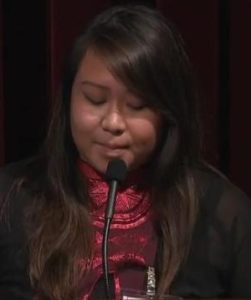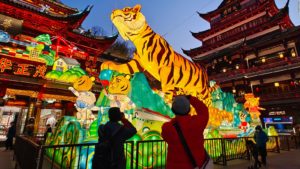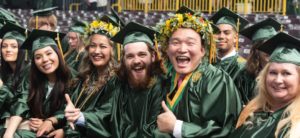Editor’s note: Statewide, about seven percent of VCCS students are of Asian descent. Not surprisingly because of the large concentration of Asian Americans in the DC metro area, students of Asian ancestry make up 17 percent of the student body at Northern Virginia Community College. We are grateful to Hoang Nguyen, NOVA’s public information officer and interim associate director of external communications, for sharing some insights into the origins and importance of the holiday.
By Hoang Nguyen
 Tied to the lunar calendar, and beginning with the rise of the second new moon after the winter solstice, the holiday originated as a time for feasting and to honor household and heavenly deities, as well as ancestors. The New Year typically begins with the first new moon that occurs between the end of January and spans the first 15 days of the first month of the lunar calendar—until the full moon arrives.
Tied to the lunar calendar, and beginning with the rise of the second new moon after the winter solstice, the holiday originated as a time for feasting and to honor household and heavenly deities, as well as ancestors. The New Year typically begins with the first new moon that occurs between the end of January and spans the first 15 days of the first month of the lunar calendar—until the full moon arrives.
As many know, the popularity of the zodiac animals exemplifies personal affects to Lunar New Year. Each year in the Lunar calendar is represented by one of 12 zodiac animals included in the cycle of 12 stations or “signs” along the apparent path of the sun through the cosmos. 2022 marks the Year of the Tiger.
 The 12 zodiac animals are the rat, ox, tiger, rabbit, dragon, snake, horse, sheep, monkey, rooster, dog and pig. In addition to the animals, five elements of earth, water, fire, wood and metal are also mapped onto the traditional lunar calendar. Each year is associated with an animal that corresponds to an element.
The 12 zodiac animals are the rat, ox, tiger, rabbit, dragon, snake, horse, sheep, monkey, rooster, dog and pig. In addition to the animals, five elements of earth, water, fire, wood and metal are also mapped onto the traditional lunar calendar. Each year is associated with an animal that corresponds to an element.
On a personal note, I enjoy receiving heartfelt messages from my mixed polyglot family from my Korean cousins, my Chinese aunt and many other family members who are not ethnically Asian but hold customs near and dear to their hearts. Lunar New Year merges tradition and representation of many Asian cultures, and opens an experience even for people outside of Asian cultures to join in on the celebrations.
Lunar New Year encompasses Tet (Vietnamese New Year), Shogatsu (Japanese New Year), Seollal (Korean New Year), Songkram (Thailand New Year) and Satu Suro (Javanese New Year) – as well as Chinese New Year. Many enjoy hearing about what other cross-cultural families during this time are doing. These shared experiences are important.
 I’m glad to report that NOVA recently received a prestigious $1.3 million AANAPISI grant from the Department of Education and looks forward to improving and expanding our capacity to serve Asian Americans and Native American Pacific Islanders and low-income individuals. The college hopes that the programs targeting AANAPI and other low-income students will help the institution meet its students’ emotional, academic and cultural needs – facilitating their academic success. NOVA in the incoming months will establish an “AANAPI Intercultural Learning Center” for tutoring, mentorship, community building, and other student support services.
I’m glad to report that NOVA recently received a prestigious $1.3 million AANAPISI grant from the Department of Education and looks forward to improving and expanding our capacity to serve Asian Americans and Native American Pacific Islanders and low-income individuals. The college hopes that the programs targeting AANAPI and other low-income students will help the institution meet its students’ emotional, academic and cultural needs – facilitating their academic success. NOVA in the incoming months will establish an “AANAPI Intercultural Learning Center” for tutoring, mentorship, community building, and other student support services.
“This grant will enable NOVA to do more for our AANAPI students as our country continues to address the impact of COVID-19 and confront ongoing biases that impact AANAPI communities,” said Dr. Nathan Carter, chief diversity equity and inclusion officer at NOVA.
You can email Hoang Nguyen at hdnguyen@nvcc.edu


 Tied to the lunar calendar
Tied to the lunar calendar The 12 zodiac animals are the rat, ox, tiger, rabbit, dragon, snake, horse, sheep, monkey, rooster, dog and pig. In addition to the animals, five elements of earth, water, fire, wood and metal are also mapped onto the traditional lunar calendar. Each year is associated with an animal that corresponds to an element.
The 12 zodiac animals are the rat, ox, tiger, rabbit, dragon, snake, horse, sheep, monkey, rooster, dog and pig. In addition to the animals, five elements of earth, water, fire, wood and metal are also mapped onto the traditional lunar calendar. Each year is associated with an animal that corresponds to an element. I’m glad to report that NOVA recently received a prestigious $1.3 million AANAPISI
I’m glad to report that NOVA recently received a prestigious $1.3 million AANAPISI